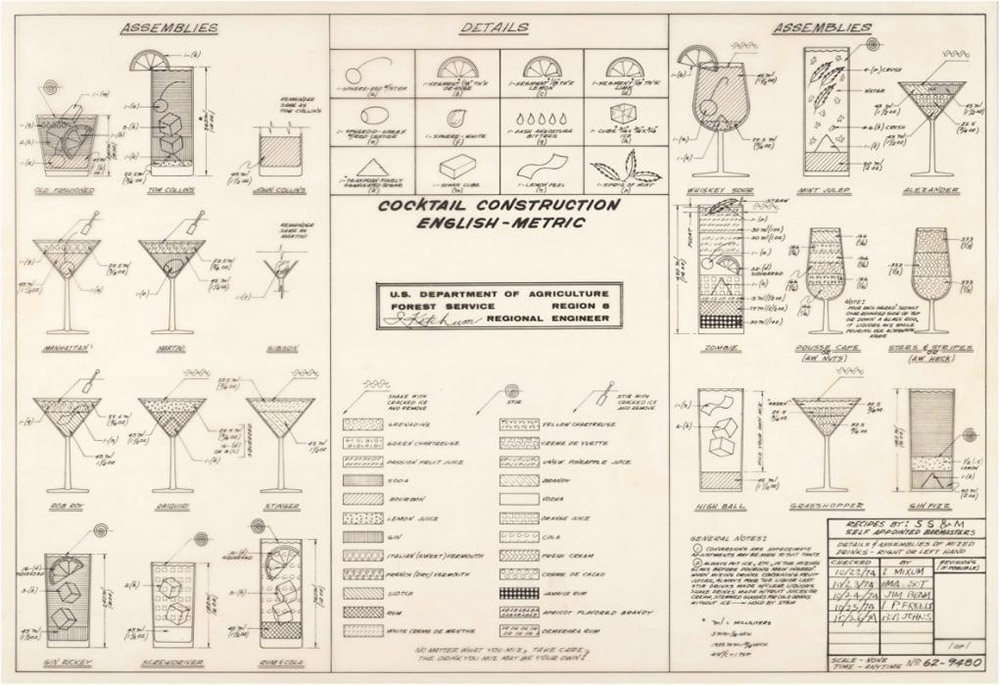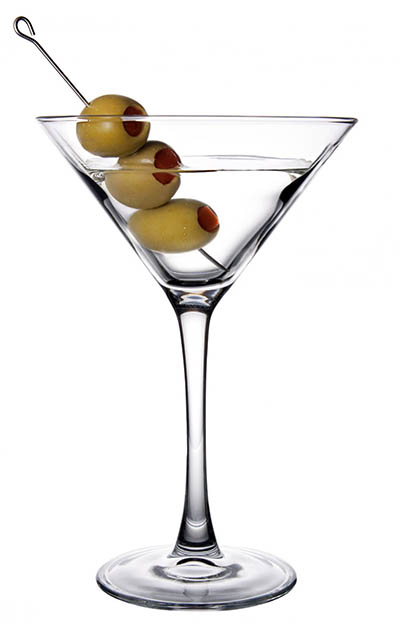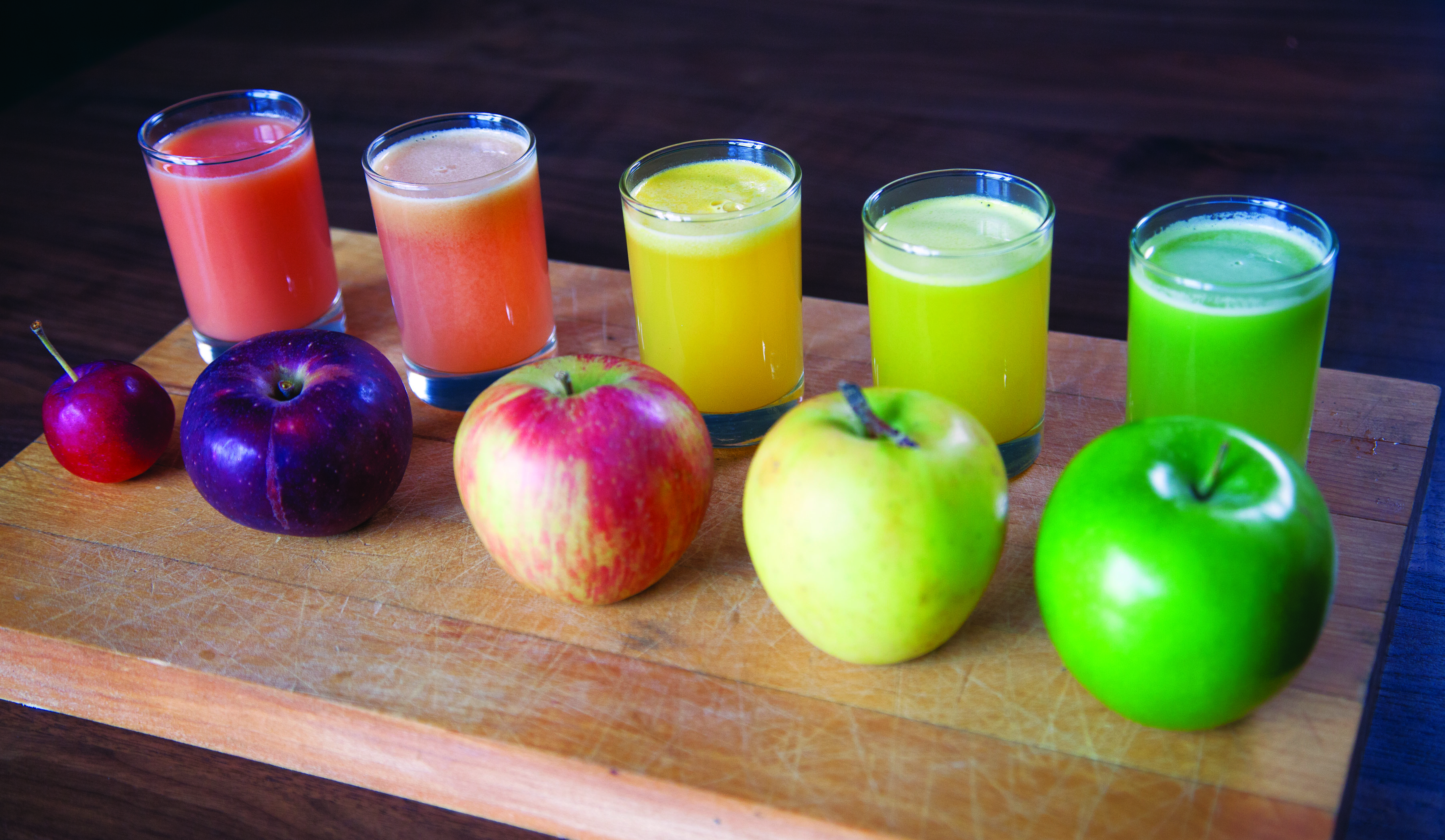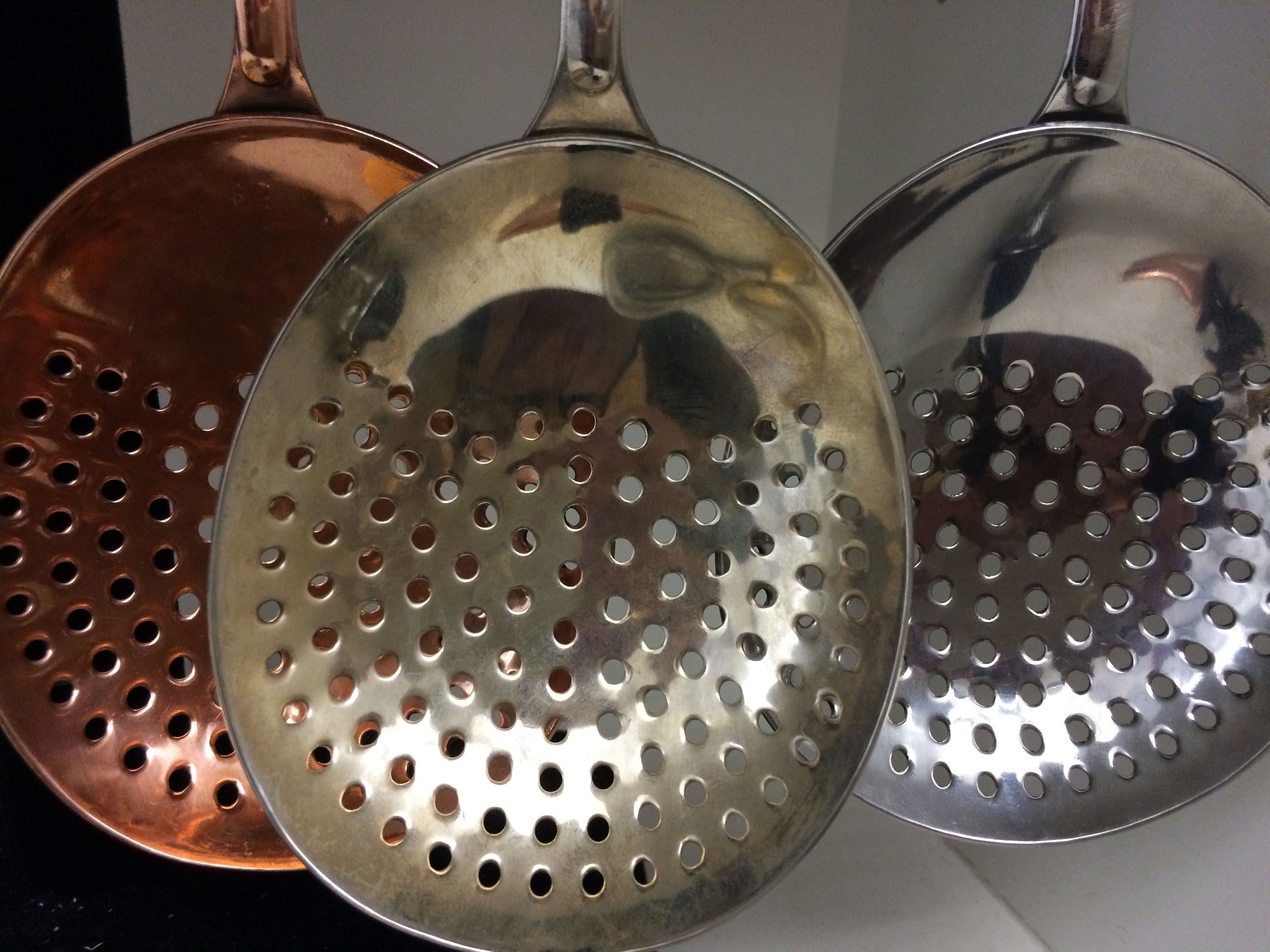Gastropod looks at food through the lens of science and history.
Co-hosts Cynthia Graber and Nicola Twilley serve up a brand new episode every two weeks.
Co-hosts Cynthia Graber and Nicola Twilley serve up a brand new episode every two weeks.
What's more, according to historian David Wondrich, mixology is "the first legitimate American culinary art"—and one that has since caught on around the world. Raise a glass, and listen in as we discover the cocktail's historical origins, its etymological connection to a horse's butt, and its rocky history, post-Prohibition. We also check out an original copy of the world's first cocktail recipe book at New York City's bartending mecca, Cocktail Kingdom; take a private cocktail science class with Jared Sadoian of The Hawthorne in Boston; and talk red-hot pokers with culinary scientist Dave Arnold. Cheers!
It might seem counterintuitive, but, in a world overflowing with fancy bitters and spherical ice makers, the thing your cocktail is missing is actually much simpler: salt. Dave Arnold, the mixologist behind high-tech cocktail bar Booker and Dax, shared this secret with Gastropod. It's just one of several scientific tricks contained in his new book, Liquid Intelligence: The Art and Science of the Perfect Cocktail.
Of course, the most important ingredient in a cocktail is the liquor. The sugar, acids, and ice choices also have flavor implications, making every cocktail recipe into a kind of calculus that factors in the physics of energy transfer as well as variations in the molecular structures of different sweeteners.

Cocktail construction chart, created by the U.S. Forest Service in 1974, now housed in the National Archives.
But salt can play a crucial role. Arnold is quick to point out that you should only add a very tiny amount—"we are not talking about salting the rim of your glass here!" he told Gastropod.
Arnold's insight draws on the same logic that calls for adding a pinch of salt to most baked goods, from ice cream to pastry. "These very, very small quantities of salt really just cause all the flavors to kind of pop," Arnold explains, because of the way our taste buds work. Recent research has begun to tease out how the receptor cells on our tongues responds to sour, bitter, sweet, and salty tastes differently depending on their concentration and how they are combined. For example, if you add a tiny sour note to a bitter-flavored drink, it will actually boost the bitter sensation, but at a more moderate concentration, sour tastes suppress bitterness. (Try this at home, by adding a drop of lime to a margarita, versus the full ounce.)
Similarly, at very low concentrations, salt doesn't register as a taste at all, but instead reduces bitterness and boosts sweet and sour notes in the food or drink you add it to. Basically, says Arnold, "next time you make a cocktail, add a tiny little pinch of salt to it and stir—and then tell me you don't like it better."
 James Bond is famous—some might say notorious—for preferring his martini shaken, not stirred. But science-minded bartenders would urge you not to follow his lead—though Dave Arnold is quick to point out that the right way to make a drink is the way it tastes good to you. Still, there's some solid science behind why a martini should be stirred and a daiquiri shaken, rather than the other way around. Both methods chill, dilute, and blend your drink—but they have different effects on flavor and texture that work better with some cocktail recipes than others.
James Bond is famous—some might say notorious—for preferring his martini shaken, not stirred. But science-minded bartenders would urge you not to follow his lead—though Dave Arnold is quick to point out that the right way to make a drink is the way it tastes good to you. Still, there's some solid science behind why a martini should be stirred and a daiquiri shaken, rather than the other way around. Both methods chill, dilute, and blend your drink—but they have different effects on flavor and texture that work better with some cocktail recipes than others.
Typically, Arnold explains, when you shake a drink, it will get colder—and thus more diluted—than it would be after stirring. "Banging ice rapidly around inside a shaking tin is the most turbulent, efficient, and effective manual chilling/dilution technique we drink makers use," he explains. Because flavor perception, and sweetness, in particular, is blunted at cooler temperatures, a shaken drink needs to start out significantly sweeter than its stirred equivalent.
Shaking also adds texture to a drink, in the form of lots of tiny air bubbles. That's a good thing when you're making a cocktail with ingredients that taste nice when they're foamy, like egg whites, dairy, and even fruit juice, and not as good when you're mixing straight liquor with bitters. Sorry, Mr. Bond.
The other thing to bear in mind is that you really shouldn't linger over a shaken drink. "The minute that someone hands you a shaken drink, it is dying," says Arnold. "I hate it when people don’t drink their shaken drink right away." We can't responsibly advise you to chug them, so we recommend making your shaken drinks small, so that you can polish them off before the bubbles burst.
Ever since the first ice-cube was added to the original cocktail recipe of liquor, bitters, and sugar, mixologists have loved their bar gear. Ice-picks, mallets, swizzle sticks, shakers, strainers, and even red-hot pokers were all standard features of the nineteenth-century celebrity bartender's toolkit. Today, Dave Arnold has added rotary evaporators, iSi whippers, and liquid nitrogen to the mix, placing the most cutting-edge cocktails out of reach of the home mixologist.
But there is one super trendy, high-tech trick that you can try at home. It's called "booze-washing," and it makes use of protein to remove the astringency from a drink. It actually has a historic basis—even Ben Franklin wrote down his own a recipe for milk punch that uses the casein protein in milk to strip out the phenolic compounds and turn a rough-around-the-edges brandy into a soft, round, soothing drink. But Dave Arnold came up with the idea when he was trying to make an alcoholic version of an Arnold Palmer, the delicious iced tea/lemonade mix.
"I knew that adding milk to tea makes it less astringent, which is why the Brits do it," Arnold explained. "And then I wanted to get rid of the milk, because I didn't want a milk tea, I wanted a tea tea." So he added citric acid, which caused the milk to curdle, so he could separate it out in a centrifuge. "And only afterwards was I like, oh yeah, milk punch!"

Arnold demonstrates booze-washing in a sequence of photos from his new book, Liquid Intelligence. Photos by Travis Huggert, who is also responsible for the image used in the embedded Soundcloud player, above.
Arnold washes drinks to remove flavors, rather than add them. He's taking advantage of the chemical properties of protein-rich ingredients—milk, eggs, or even blood—that preferentially bind to the plant defense chemicals that can give over-oaked whiskey, certain red wines, tea, coffee, and some apple varieties a mouth-puckering dryness. He's found that as well as smoothing out a drink, booze-washing has the side benefit of creating a lovely, velvety texture.
The good news is that you don't need a centrifuge to make the perfect milk punch or alcoholic Arnold Palmer at home. You can follow Arnold's recipe (see below), let it sit overnight, and then strain out the curds through a cloth and then through a coffee filter. According to Arnold, your yield will be a little lower than with a centrifuge, but the result will be just as tasty. His only word of warning is that you have to drink the resulting cocktail within a week, or else the proteins will clump together and the drink will lose its foaming power. But that shouldn't be too difficult...
Listen to Gastropod's Cocktail Hour for much more cocktail science and history, including an introduction to the world's first celebrity bartender, an unexpected use for Korean bibimbap bowls, and a cocktail personality test based on Jungian analytics.

Cocktails photographed by Travis Huggert for Arnold's Liquid Intelligence.
David Wondrich's history of the American cocktail and its first celebrity, pioneering bartender Jerry Thomas, won a James Beard Award when it was first published in 2007. It was updated and reissued this year to include new research, including Wondrich's discovery of the curious etymology behind the term "cocktail." Wondrich is also the author of several other books of alcoholic history, including Punch, on the mixed drink that preceded the cocktail.
Jerry Thomas pours his signature Blue Blazer.
Dave Arnold runs Booker and Dax, a high-tech cocktail bar in New York City's East Village. His recent book, Liquid Intelligence: The Art and Science of the Perfect Cocktail, is a gorgeous full-color mixological bible that covers every aspect of cocktail science you've ever wondered about, and several that you undoubtedly haven't. He's lectured on cocktail science at Harvard, he is Founder and President of the Museum of Food and Drink, and he also hosts the radio show Cooking Issues on Heritage Radio, where Jack Inslee was kind enough to record our interview.
Jared Sadoian is a MIT-trained technologist turned mixologist: he manages the bar at The Hawthorne in Boston and lectures on the science of distilling and mixing drinks.
Cocktail Kingdom, a mecca of all things cocktail, not only has a small supply store that features such delights as custom-designed strainers, swizzle sticks, and ice cube molds, but owner/founder Greg Boehm has also amassed one of the world's most impressive collections of vintage cocktail books. Manager Ethan Kahn showed us a first edition Jerry Thomas' Bartender's Guide: How to Mix Drinks, a Bon Vivant's Companion from 1862; the company also sells reprints of that and other vintage cocktail books, including The Flowing Bowl, by The Only William in 1891, which includes a cocktail poetry section.

Julep strainers at Cocktail Kingdom. Photograph by Nicola Twilley.
Sam Bompas and Harry Parr specialize in culinary spectacle, flooding a terraced house with punch, cooking steaks with lightning, and publishing the memoirs of a stomach. In April 2015, they unveiled their "Cocktail Monolith" at a festival at London's Ministry of Sound. The Monolith presented festival-goers with a series of questions, analyzed the results using a framework inspired by psychotherapist Carl Jung, and then mixed a drink using ingredients that would both suit and enhance each individual's personality traits.

Cynthia the Logistician's Hallucino-tini (left) and Nicky the Mediator's Wise Sour (right), as prescribed by Bompas & Parr's Cocktail Monolith. Photograph by Ann Charlott Ommedal.
(republished with permission from Arnold's Liquid Intelligence: The Art and Science of the Perfect Cocktail)
Boozewashing to Make Tea Vodka
32 grams tea (Arnold specifies Selimbong second-flush Darjeeling)
1 liter vodka (40 percent a.b.v.)
250 ml whole milk
A fat 1 oz (33 ml) freshly strained lemon juice (Arnold uses 15 grams of 15 percent citric acid solution)
Add the tea to the vodka in a closed container and shake it up. Let the tea infuse for 20 to 40 minutes, shaking occasionally. The time will change based on the size of the leaves you use and the type of tea you use if you don't use the Selimbong; what's important is the color, which provides a decent indicator of brew strength in tea. Go dark. When the tea is dark enough, strain it from the vodka.
Put the milk into a container and stir the tea vodka into the milk (note that if you add the milk to the tea vodka instead, the milk will instantly curdle and reduce the effectiveness of the wash). Let the mix rest for a couple of minutes, then stir in the citric acid solution. If you don't want to buy citric acid, use lemon juice, but don't add all the lemon juice at once; do it by thirds. When the milk breaks, stop adding. Don't stir too violently after you add the acid. Once the milk breaks, you don't want to reemulsify or break up the curds at all, or you'll make straining more difficult.
After the milk breaks, you will see small clouds of tan curds floating in a sea of almost clear tea-colored vodka. If you look closely, you'll see that the vodka is still faintly cloudy. It still has some casein in it that hasn't agglomerated onto the curds. Take a spoon and gently move the curds around to mop up the extra casein. You should see the vodka get noticeably clearer, and the curds will get noticeably more distinct. Do the gentle curd-mopping several times, then let the vodka sit undisturbed for several hours to settle out before you strain the curds with a fine filter and a coffee filter (or just spin the stuff in a centrifuge right away, as I do).
Ingredients for Tea Time
(makes 137 ml drink at 14.9 percent a.b.v.)
60 ml (2 ounces) milk-washed tea-infused vodka
15 ml (0.5 ounce) honey syrup (to make honey syrup, add 200 g of water to 300 g of honey)
15 ml (0.5 ounce) freshly strained lemon juice
2 drops saline solution or a pinch of salt
Combine all the ingredients, shake with ice, and serve in a chilled coupe glass. Garnish with pride in a job well done.
While Arnold uses booze-washing to remove unwanted flavors, other bartenders have developed a related technique, called fat-washing, which works in reverse. It uses the power of alcohol to capture volatile aromatic molecules to create deeply savory cocktails infused with bacon, brown butter, or even sesame flavors.
We owe a huge thanks to listeners for all the cocktail stories you shared with us. It was such a treat to hear your inspired discoveries and drinking disasters while we made this episode. Thank you!